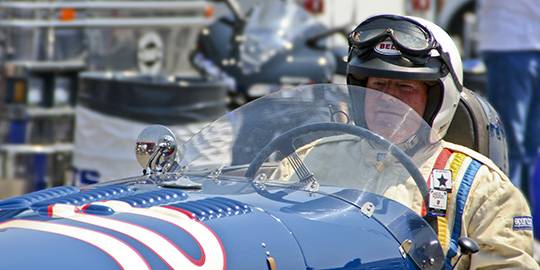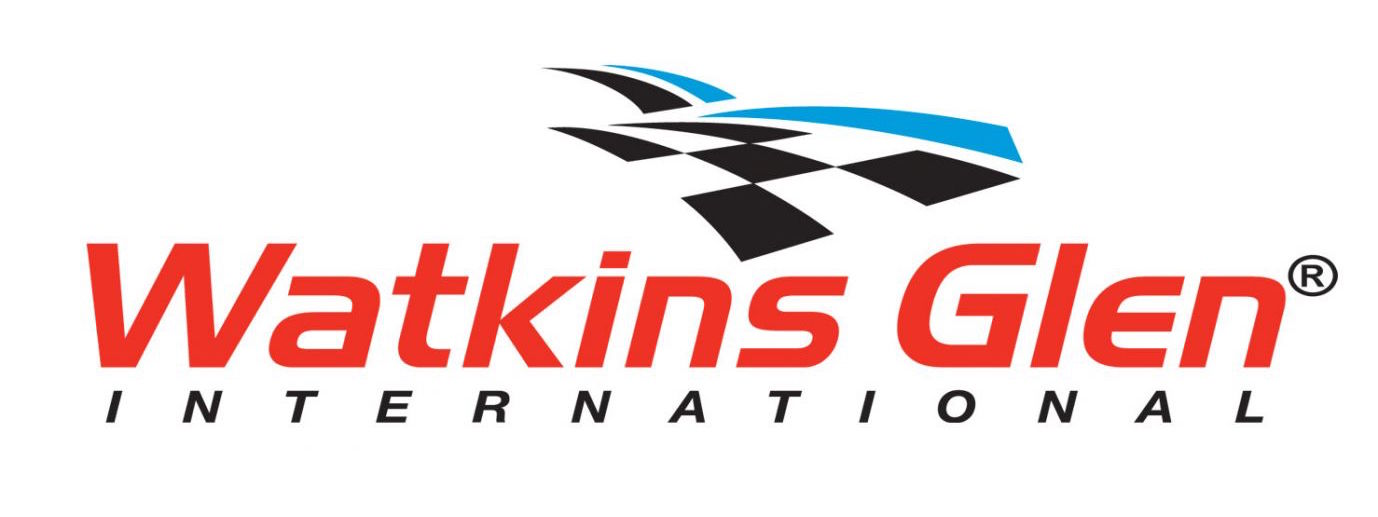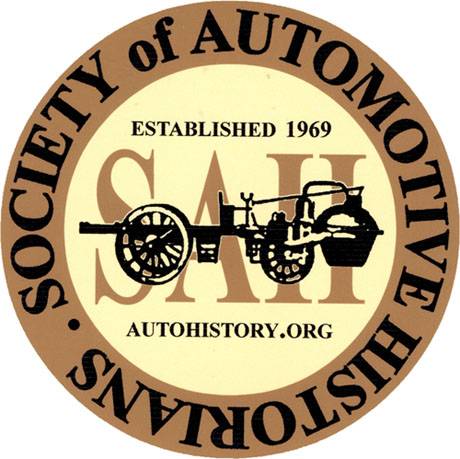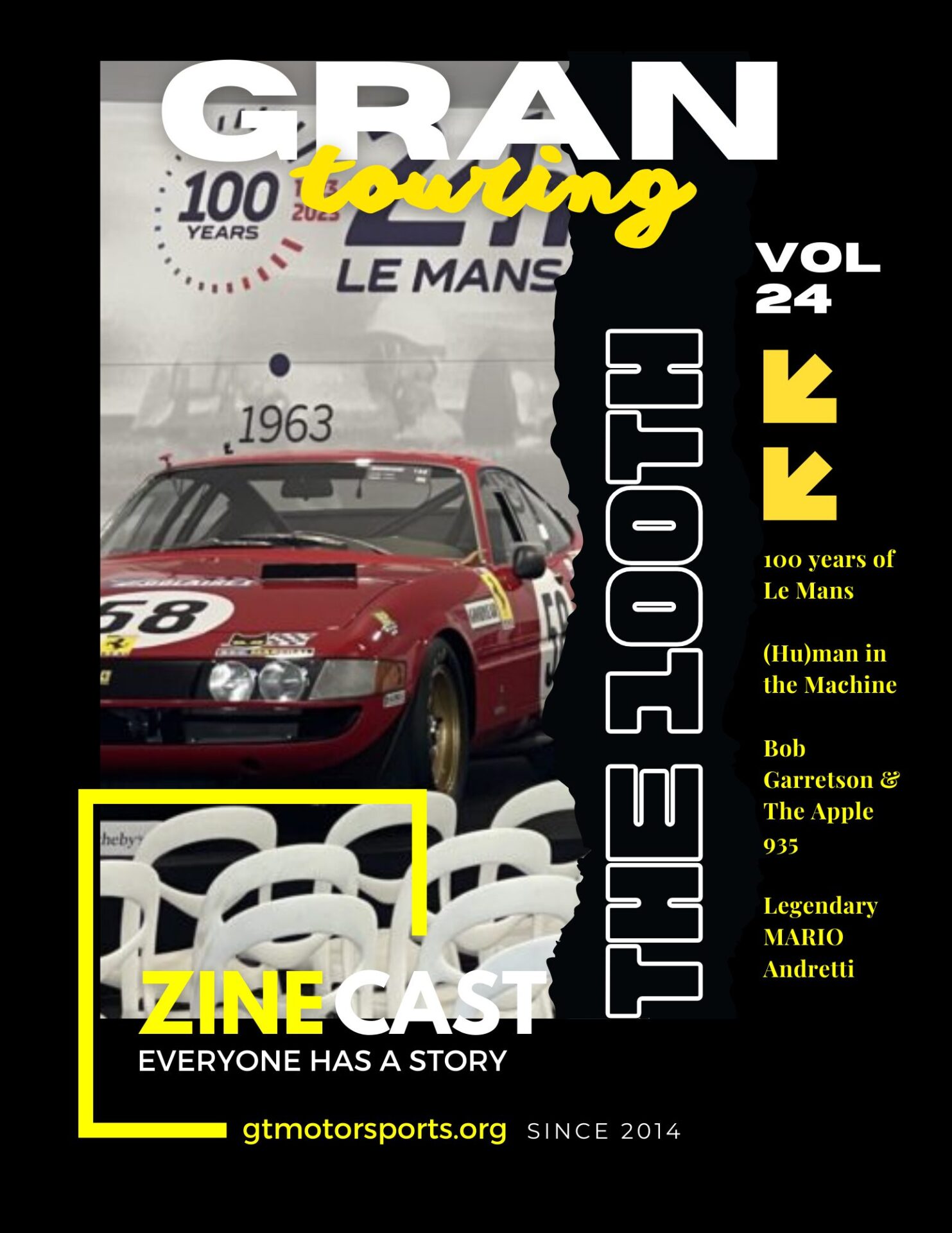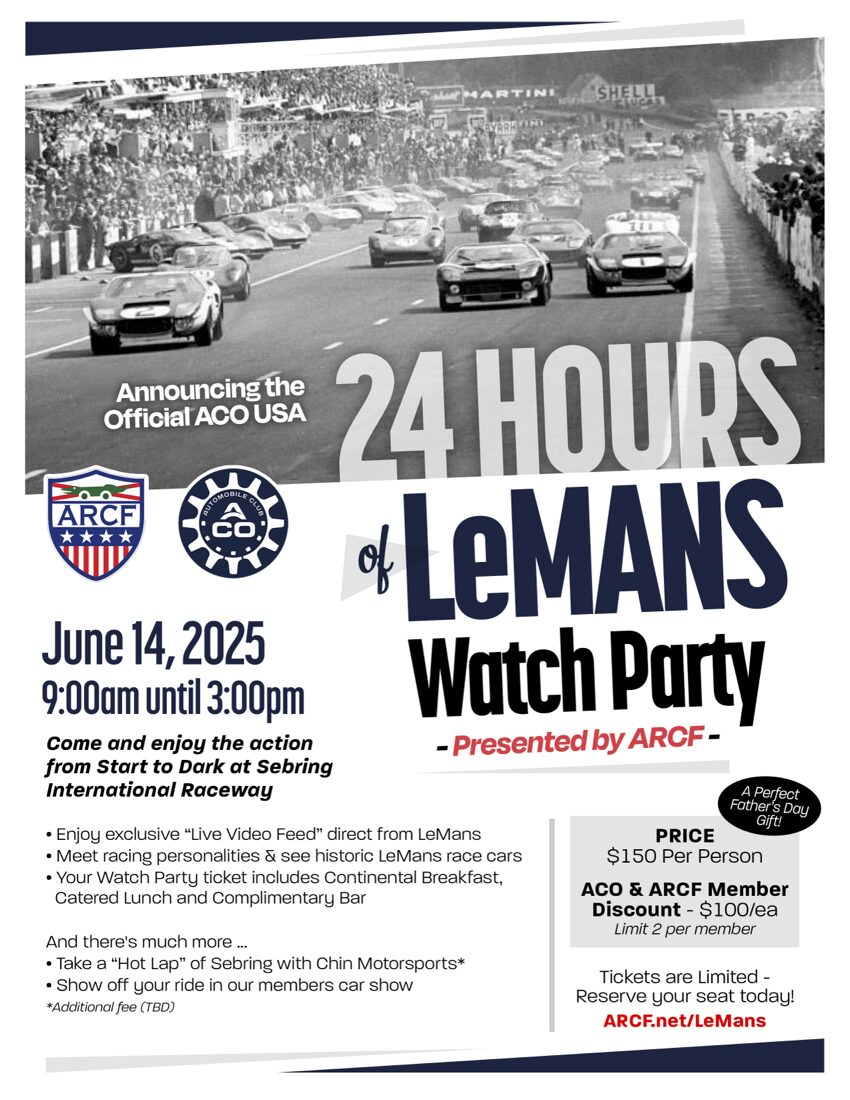Joe Freeman’s talk will cover the history of some of the earlier champion race drivers who but for a stroke of bad luck, and unfortunate last-minute mistake, or just the intervention of fate, were never able to win America’s greatest race, the Indianapolis 500. Mr. Freeman’s reflections are on his recent book: Second to One: All but for Indy.
Tune in everywhere you stream, download or listen!
Bio
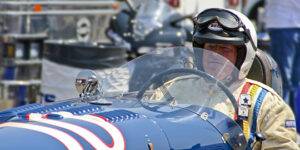
Joseph Freeman is an automotive historian, writer, publisher, vintage racer, and racing car collector, well known in the racing world for his expertise on automotive subjects and as owner of the award-winning publishing house Racemaker Press of Boston.
Notes
Transcript
[00:00:00] Hello and welcome to the Gran Touring Motor Sports Podcast Break Fix, where we’re always fixing the break into something motor sports related. The following episode is brought to you in part by the International Motor Racing Research Center, as well as the Society of Automotive Historians, the Watkins Glen Area Chamber of Commerce, and the Arting family, second to one by Joe Freeman.
Joseph Freeman is an automotive historian, writer, publisher, vintage racer, and racing car collector well known in the racing world for his expertise on automotive subjects and as an owner of the award-winning publishing House Race Maker Press of Boston. His talk will cover the history of some of the earlier champion race drivers who, but for a stroke of bad luck, an unfortunate last minute mistake, or just the intervention of fate, were never able to win.
America’s greatest race. The Indianapolis 500 Mr. Freeman’s Reflections are based on his recent book, second to One All But for Indie. All right, our next topic [00:01:00] presentation, second to None by Joe Freeman. Hello everyone. Good afternoon. I always enjoy coming back to Watkins Dunn for a couple of reasons. At least two of them are one, I won my first formula Ford Race here against the 25 for 2028 other guys, which was pretty exciting.
It was also the first formula Ford race that was held on the new long track. So I was pretty pleased about that. Went home, smiling, thinking. Of course I was gonna be a grown pre champion, which I was not. The second was, uh, when I came, uh, for a, uh, IMSA race that they had for formula, Fords had my first comprehensive wreck.
Uh, I got them Red Mist and drove over by the guy in front of me, uh, who was holding me up and, uh, ended up in the guardrail and, uh, came out with a very bent car. And, uh, luckily not too many injuries, but, and a bash to sense of, uh, of competition. The Red Mist does work. The, the talk I’m giving today is based on a book which you’ll see back there, you can look through.
It’s called Second to One. It’s [00:02:00] an idea that I had several years ago about knowing that there were so many. Really interesting drivers who had taken second in Indianapolis and then and were champions and whatnot and never got any recognition and nobody knew about them, or at least if they knew about them, they didn’t think that they were of significance.
So I felt, let’s do a book on that. And it really came out, I think, quite well in this case, I’ve changed the name because I’ve chosen three of these drivers who were really major contributors to American racing. And so it’s second to none because these guys really were. In some ways, not just second to one, but second to none in the sense of their con contribution to American racing and to the Indianapolis 500.
The first is a man by the name of Earl Cooper. I’m not sure if his name is familiar to you. A lot of, a lot of you. He was a, as you can see, a three time national champion, 19 13, 19 15, 19 16. And that era literally went from everything from racing on [00:03:00] open roads through, uh, parts of California where he, he, uh, and other, uh, road races, uh, on the West coast, uh, in Tacoma and whatnot, through the first major board tracks.
One of which was in Chicago, another of which was, uh, in Sheepshead Bay, New York. And I hope all of you are familiar with the fact that there was an era in which all the major championship racing was done on high banked board tracks, board speedways. If not, come see me later. Earl was say. Second in India, 1924, but he was also a constructor in an entrant.
This photo is a of when he first joined Stutts. Harry Stutts was a tough guy to work for, but Earl really did. Uh, he, he knew how to do it. He had, uh, started out in Maxwell, but he really, he was a superb racer, and as a result, he won, I think it was something like 23 national Championship races, and he teamed up with a mechanic by the name of Reeves Dutton.
And the two of them were practically unbeatable. This is [00:04:00] driving in big open studs, Bearcats, basically a mixture of your sports and racing car again, in all over the country. He was a remarkable driver. He was not a big man, and yet he would do these literally 300 mile and, and, and 400 mile races. I, I don’t know how he did it, but he was really good at it.
And Rees Dutton. Could take apart and put back anything, anytime, and was a huge help to him. So that as a team, that’s one of the reasons why they won three national championships. I, by the way, I have to preface that with a little asterisk by saying that in 1913 and 1915, There was no national championship.
It was only later on that the AAA established a national championship in 1916. First, as a result, it was magazines of the day, the Motor, motor, motor Age, horseless Age that declared someone was a champion, and they declared Earl Cooper as as being a champion under any circumstances. He really was a, a major driver at [00:05:00] his time.
In 1919, having, having won all those championships and having been a really superb and well-known sports figure, I mean a Honus Ner, or a guy Cobb in some ways, in his own day, uh, he decided to retire. Kind of fun shot I put in. He’s, this is taken in Tacoma, Washington. That’s a big touring car. He’s going fishing and he’s gonna relax for life.
But then, uh, In 1921, a guy by the name of Joe Thomas who was driving for Dusenberg, was riding a horse, fell off the horse, broke his leg, and Cooper was there and they said, well, why don’t you drive his car? Not, not only did he drive a car on the Fresno board track, he won the race, by the way. It’s the only time he ever drove a nunberg.
But the fact was he was able to literally, after three years of. Total time off Beat the best. And Jimmy Murphy and uh, uh, well, Jimmy Murphy wasn’t really in full blast at that time, but Tommy Milton and a whole series of other really great [00:06:00] drivers. So, uh, that’s by the way, a fellow by the name of Al Nielsen beside him on one of the Dusenberg mechanics who accompanied him on that win.
Here he is in his. It’s illegal to big stda baker, but it’s not as, I think most of you will know. It’s a Miller. It’s a Miller 1 22, not a 91. And you can see at the bottom of there, those are the updraft carburetors. Underneath the frame was, uh, prior to the time that they had supercharging for these millers, uh, this was very much the same as the car that won the race, which was Tommy Milton’s Miller that looked almost exactly the same.
But, uh, Earl was pretty good at selling sponsorship. So he got a, initially a sponsor, a St. Baker, and then eventually a, a St. Baker dealer in San Francisco to sponsor him, uh, called Weaver. But he continued racing and, uh, continued winning races, uh, major races, 250 miles generally on these board tracks.
That’s what they ran. And at the same time, [00:07:00] he could drive almost anything that you put him in. This is one of Miller’s early front drive cars that initially were developed 1924. And by the way, the car that nearly beat him in, in and or nearly won the race in in 1924 was uh, front Drive Miller. These were incredible machines.
They had some weaknesses, but overall they were. Really fast. He put this on the pole in Indianapolis that year as it happens. He also wrecked it, but not in the race. He didn’t finish the race. The, uh, gearbox broke as they did quite regularly on, on the Miller front drives. That was a weakness. But then he did decide to retire again and when he retired, but he didn’t retire altogether.
He made a deal with Dutton. He and Dutton got some money from Buick, which is why there’s this odd radiator, uh, shell there. And they built their own front drive that they thought would be better than the, the Millers Cooper front drives. I think they built three or possibly four of them. And [00:08:00] this is, uh, One of them that, uh, entered the, the 500, this is another one.
It’s, it’s a little hard to see, uh, Earl behind there, but he’s there along with Ray Dutton. They didn’t finish the race, but what was important about these is he was one of the very few. People who actually decided to build and enter CARSs at Indianapolis as well as be a driver after he’d finished driving.
They were successful enough so that these chassis continued on. I think that there’s still, well, I know there’s still at least one around, and I think they continued racing at Indianapolis after the Second World War. They, they were modified in all sorts of different ways, but the Coopers were just known.
You can see his engine configuration was a little different. He was a straight eight. Double overhead cam shaft engine exhaust system and trying to get the car as low as possible, uh, was one of the things that he was attempting to do, uh, with this particular design. After he finished with that project, [00:09:00] why, uh, became a car dealer for Marmon?
At the same time kept his, uh, involvement with racing Throughout his career. He worked for the Union Oil company and developed a number of different products for them. He was also, by the way, one of the earliest people use Ethel led for, uh, his engines in the 500. He and Tommy Milton were there, and he stuck around in Indianapolis.
Here he is in his latter years with Peter Paolo being an official until his death was, uh, Again, an extremely well known American sports figure who was, uh, very much appreciated. Earl the Pearl, they called him also the California Comet. He had a lot of different names, but a really quick guy. The next person I’ve chosen is Harry Hartz.
Harry Hartz was a really interesting fellow. His rundown was a national champion. In 1926, he won seven major board track championship wins. Second in Indian three times 19 22, 23, [00:10:00] 26. Indy car entrant from 1930 to 1940 and wins as an owner in 1930 and 1932 at Indianapolis. So no small hitter. He started out nice portrait of him, the Chevrolet, as a reference to his time when he was being a mechanic for Billy Durant’s son, Clift Durant, who was promoting Chevrolets at the time and they were racing together.
So that’s why he has that. Chevrolet Baja, but he started out as a kid racing these small race cars that were basically motorcycle engine creatures. Uh, there were actually quite a few of them. Uh, a few have survived and they had races on board tracks the same way, and also on road courses. I think they raced in Santa Monica, et cetera, and he got his first name.
Through those, and he called himself the junior racing champion of the world. Maybe he was, I’m not sure, I don’t know how many kids were doing that at the time. But as he grew older, he associated himself with various folks, uh, including a very [00:11:00] well-known driver by the name of Eddie Hearn. Hearn, uh, had one of the 1915 championship winning Stuss were remarkable cars.
Uh, believe it or not, they, they built four. Two are still in existence. One in the United States, in Los Angeles, in the Los Angeles County Museum and the other in New Zealand. They were hugely successful. Harry Stutz used them as a promotion, but then when they won the 1915 championship, he said, I’m done with racing.
I don’t want it anymore. And he sold his cars, and at least some of them, maybe all of them, went to Cooper, but eventually ended up in the hands of. Cliff Durant who was racing them. And this is Harry working on the engine by, we can see it’s a single overhead cam engine with the exposed valves and whatnot, but in the day they were light, fast and could win on road courses, on board tracks, uh, and uh, on sand just about anywhere they wanted to race.
This is a picture of his first win at, uh, Indianapolis. Sorry, it’s [00:12:00] not a. The best quality of picture, uh, that I have. It’s a dusenberg. It was, uh, a dusenberg that actually is, we believe if it’s correct, yes. This is the actual car that is still in existence. It’s in Fred Simeon’s collection. I’m sorry. It it, it’s not that car, but it is one of the three cars that were taken to France in the 1921 French girl prey.
Jenny Murphy won with his Driven by Joe Boyer, another driver. Was brought back. Harry Harts bought it and that’s it. That car is still in existence and, and, and in very, very original. It’s amazing that it survived all the years through its racing. It raced in California, it raced in the east, but they tried it at Indianapolis later on.
Didn’t work. Fred Simeon’s father bought it from a family by the name of Burger who owned it at the time. Kept it. I had to convince Fred that he had one of the most important racing cars in the United States. He, he wanted to stay, keep it the way it was. It had been for 1930, but when I sent [00:13:00] him a, a lengthy article, I’d written about it, he, he called me up and said, Joe, I had no idea you knew that much about this car.
I’m gonna restore this and restore it as a real racing news berg. So if you go to Philadelphia and you, and you look, that car is there, it’s, it’s one of Fred’s really remarkable machines. He continued, by the way, With that, uh, car he raced in 22 was a full dusenberg with a Dusenberg engine. But by 1923, uh, Jimmy Murphy had, uh, bought a Miller double over red cam engine, which seemed to work better than the single over red Kim Dusenberg.
Uh, the 180 3 cars that were, uh, 183 Cub Cubig inch cars. And as a result, Murphy bought a, a Miller and put it in his, in his Nunberg chassis and called it the Miller Special. He won the Indianapolis 500 with it. Seeing that, uh, hearts not to be left behind. Got his own Miller engine and put a miller nose on the berg.
And, and this is him on a board track racing that in the latter part of [00:14:00] 19, uh, 22. And, and in 1923, by the time, uh, that, uh, Indianapolis rolled around in 1923, the Millers had become basically almost ubiquitous, sponsored by the first real big. You might say, uh, swatch of them, I think four or five were built with money from.
Again, if you can see the side there, his sponsor, cliff Durant. Cliff Durant actually is an unknown figure in, in a lot of American racing. He was the son of Billy Durant who founded General Motors. His money paid basically for a lot of innovation, including the, for example, the front drives that really transformed American championship racing, particularly during this board track era.
Finally, the third, uh, second place was, uh, in, uh, 1926. That’s the year that Frank Lockhart won in the rain, but can imagine. Here’s, uh, Harry again, I gotta say he must have been enormously frustrated by the fact that he’d taken second three times coming [00:15:00] within inches of, of winning the big race, but never did.
He continued his career till 1927. He got one of the front drives, uh, and made a national championship in that year in 1926. He also set several close course world records, including one at a board track Speedway in Amaal, New Jersey. Uh, It was a, uh, track named after ans factory that was built there. He set a world record for a 300 mile distance.
I’ve forgotten what it was, but these were, uh, 1500 CC engines and I, and I believe it was the average for the race was over 130 miles an hour. If you can imagine that double orbi cam shaft, small pistons, uh, Gordon White here had brought along one of the, the little 91 pistons. It’s amazing to see. But these cars were, uh, incredibly fast for their size.
By the way, they were also all supercharged, uh, at the time. And, uh, that technology had, uh, been pretty well developed and they’d also improved on lubricants and [00:16:00] fuels, along with tires. There, there were a lot of word track innovations that came along as, uh, racing, being matured. Competition between first Louis Chevrolet, the Duesenberg Brothers, Fred and Augie, of course, Harry Miller, who, uh, who, uh, Gordon will talk about later.
He then Harry had a really serious accident in New Hampshire at the board track there. Nearly killed him. He was very badly injured, but was burned, you know, broke ribs, broke arms, and uh, whatnot, and basically, I think probably damaged his brain enough so he was never able to race again. But he stuck around and lo and behold, he started to enter his own cars at Indianapolis, and this is one of them.
I believe it’s the car from 1932, which was, um, a winner, that huge trophy. By the way, if you don’t recognize it, is one of the. Crown jewels of the collection of the Indianapolis Motor Speedway Museum. It was made by Tiffany. It’s called the Wheeler Siebler Trophy, and [00:17:00] it’s given to the car that’s leading at 400 miles.
Well, it’s, it’s an amazing trophy. I, I’ve seen it in person. They had it at the Museum of Fine Arts of Boston for Tiffany Exhibit. It’s just incredible. If you get there again, they don’t put it out on display. I, I don’t. Quite un under understand why. Here we have, again, some of the old timers from left to right, babe Sta, who was a, a, a regular racer at the time, but had retired by this time, Earl Cooper, uh, this is in Indianapolis, of course, Tommy Milton, who was the chief steward at that time.
And you can see, uh, On his AAA car and Harry Harts to the right. These guys were, they, they were the old timers around Indianapolis, but they were very well respected. They were all, uh, served as various, uh, shall we say, officials and uh, sort of advisors to Rickenbacker. And then after the track was sold to the people who owned it in after Rickenbacker, Here’s another group of, uh, interesting people left to right again.
Peter DePalo, who was [00:18:00] of course a winner several times. Eddie Hearn behind him, who’d, uh, been a mechanic for, and the infamous Mike Boyle in the middle, uh, umbrella. Mike, if you haven’t read that story or know that again, come around and ask me about it. Uh, he was quite a character and Harry Harts, so they were again, hanging around Indianapolis at the time, getting ready for the 500.
But again, this is the sort of final picture of Harry. He was, uh, basically got very old. I think he died. This was, this was taken in 1971. He died in 74. But again, sadly an unknown figure. A man who really contributed to the race in a lot of different ways and drove a lot of different cars. He, uh, he drove cars on the salt.
He drove cars. Uh, he drove a car backwards across the United States and set a record. So it’s quite an interesting character. All these guys were, I’m picking these because they’re kind of fun and interesting. Finally we got Lou Moore. Lou was not as much of a standout racer, although he certainly did well, he started [00:19:00] in a very competitive racing in in California at um, A track called Ascot.
Uh, not the Ascot, you know, nowadays, but it was a very, very popular track during the, the thirties. Very competitive, whole number of major drivers came out of there including, um, say Rex Mays and, uh, oh gosh, the names would go on and on, who were racing at, and who developed their skills at, at Ascot, which was not, by the way, it was a, it was a packed dirt.
Race track. Um, I think about, uh, I I wanna say it was a little longer than, uh, half mile. I think it was, uh, maybe about three quarters of a mile. Uh, you can see he was second in India in 1928, but kept racing during the so-called, uh, junk formula era when indie cars had gone back to riding mechanics and supposedly to get manufacturers involved at the same time.
He finished a third in 1933 and 1934. Then he himself turned to be an indie entrant, was a good shot of him as a driver [00:20:00] and one early shot of him. This is the number 28 car is the one he took second in a copy of that car called the Majestic Miller. Bright Green, by the way, green was not allowed in Indianapolis for a long time.
They thought it was a hudu, but it was green Anyway. In this particular case, that was, it was before, it was the Majestic Miller. It was the next year. Uh, here he is in one of the two man cars. Again, there’s Mike Boyle’s name coming up, and I think this is one of the cars he finished third in, but he himself felt he should retire.
He wasn’t doing well enough, and so as a result, he himself. Turned to being an entrant. He, uh, encouraged a car builder by the name of Curly Wek to build a very, uh, by the way, by this time in 1937 or 38, had returned to one man chassis and in 1939, Lu Moore entered this, uh, wetter Earth, uh, chassis with, I believe that’s Floyd Davis.
And, uh, Floyd won the race for him. The first race he’s won on an [00:21:00] entrant. Then Floyd was killed in the next, uh, Indy 500. Sadly, the, the next year, 1941, I believe, uh, he hired Murray Rose, who was an upcoming young driver at the time. And, um, rose, uh, along with another driver, took his car again, that wet earth and won, uh, the India a second time.
So he, he was a two-time winner by that time. Of course, took time off during the war, but then following the war, It was sort of a mixture in 1946 of cars that had just been assembled together, but Lou Moore said, no, I, I want to build something really original. And so he embarked on building these very radical front drive cars and made by men by the name Emel Dee.
They were very successful. They had a low. Uh, sense of gravity as a result. Uh, Murray Rose was able to dominate the Indianapolis 500 for two years running in 1947 and 1948, winning the race there. So two more wins for for Lou. [00:22:00] Finally, uh, Rose’s partner, bill Holland was not too pleased, particularly in the second time around about being beaten by by Rose.
But Rose broke in 49 and as a result, Holland, uh, won his race. So Lou Moore, uh, was truly a, a magnificent and interesting character, and not only in terms of the innovation he brought to the track, but but also the success for the Indy 500. Here’s the final entry that he had, a final entry that actually made the race in 1952 with, again, one of his front drive cars, Tony Betten Haen, who drove for him for three years.
By that time, the cars were. Out of, uh, competition. They were, they weren’t competitive. In any case, all of this information I’ve gone through, come out of the book that I’ve done here second to one. It was an idea that occurred to me, as I say, I, because I felt it was really important. Uh, there are about 40 drivers in here who were.
And their names in there, like again, like these folks, but Rex Mays and of course probably the most [00:23:00] famous be Michael Landrey, who wrote The Ford for, was incredible, uh, how many times he came close to winning the race and didn’t, uh, the, the, the Andrei Curse really covered his, his career. So, That’s about it, other than to say that, uh, I’m delighted to be here.
I’m delighted to take us back to some of the history of American racing when it was really successful in major sport in the United States, sadly. Now where I bet I could ask people in the room how many people would know who the National Champion was, who won the National Championship this year. Can anybody tell me who won the National Champ this year?
Nobody. Who won the National Championship of American racing. Of, of IndyCar racing. Yeah. That, that shows how, unfortunately, sadly, American racing, particularly open real racing, but all American racing has been just the television ratings are, are zero. The, the emphasis is going away, even for NASCAR as well as others.
So that’s a whole nother topic. But, but I thank you and, uh, [00:24:00] I hope you’ve enjoyed my. Kind of raced through a couple of, or three, three guys who were really kind of interesting early drivers.
Thank you, Joe. Thank you. We’ll see if I have any questions for interview. You don’t know. Joe has become a publisher and he’s published, uh, one of my books as well as, as a number of other, what I think of is important racing books. Just a question on Louis Chevrolet. His little history on his racing at Indie Louie, I’m trying to remember how many times he raced at Indie and I don’t recall right offhand, but he initially came to the United States, actually a Canada as a cha of fur that was hired in New York.
First major race he did was one of of Vanderville Cup, and I want to say, As I say, I think it was 19 0 4, 19 0 5, it was his first, uh, race on Long Island. Uh, he [00:25:00] drove a car for a, a guy, um, a big fiat, had a wreck, nearly killed himself. He continued racing on and off, but primarily he, he wanted to build his own car and he went to Billy Durant and said, I want to build a Chevrolet.
Well, Billy Durant said, fine, but what? Chevrolet had in mind. Louis Chevrolet, they had in mind was a quality car. What Billy Duran had in mind was something to compete with a model t Ford Durant won, came out basically turning a car that was called the little at the time into the first two Chevrolets.
The royal male and I, I tend to forget this, the name of the second, and so, but Louis, Was totally desist. He had built his own racing cars called Front and Acts that competed with the Duesenbergs, uh, and eventually Harry Millers. Then subsequently he and, well, one of his brothers, he had three brothers who came to the states.
One was killed sadly in 1920 at, uh, a race in, uh, in Los Angeles. Uh, [00:26:00] on one of the board tracks. Uh, then, um, he and his other brother started a company called Front and Act, and they made speed equipment for Model T Fords, uh, hot up systems to, uh, improve the, uh, the, the engine, but, you know, uh, primarily to, uh, heighten its fuel consumption, but then eventually went to overhead valve systems.
The first one called Single Stick, and the second one then called a dio. Those are very rare. I think they only built about three or four of them, but they were very successful, well into the thirties. So he had a full career in racing and around racing. But as a driver, he, he, again, I, I, he competed at Indianapolis, but I, I’m sorry, I can’t remember exactly which years and, uh, what cars he drove.
I should know, but I’m a little blank on that. I’ll look it up. By the way, one. Just tool that some of you might wanna learn to use, which I’ve found hugely valuable is called champ car stats.com. www.champcarstats.com. If you go on [00:27:00] there, it’s got all the drivers. A lot of the car makes all the races for different years and extremely.
Full statistics. So if you need to, to hunt up something, you can do it very quickly on that site. There are a few mistakes here and there, but believe me, for a person who’s researching, racing or wanting to know about drivers or in their careers, that’s where to go. Uh, it’s a, it’s a really useful site. I’m, I’m glad we have it.
Any other questions? Who was the driver that won that race? Uh, that won the, uh, the one you were talking about, the big race, Indy 500 or the Yeah, the one that you were talking about. Oh, the in car. Oh, uh, yes, it was, it was willpower driving for, for Roger Penske. You’re quite welcome. Uh, sorry, I should have said that.
Um, uh, again, the year before, very few people would remember. We’re not, uh, anywhere near where we should be, but thanks again. I appreciate it and, uh, [00:28:00] always enjoy coming here. Thank you, Joe. Thank you. This episode is brought to you in part by the International Motor Racing Research Center. Its charter is to collect, share, and preserve the history of motorsports spanning continents, eras, and race series.
The Center’s collection embodies the speed, drama, and comradery of amateur and professional motor racing throughout the world. The Center welcome serious researchers and casual fans alike to share stories of race drivers race series, and race cars captured on their shelves and walls, and brought to life through a regular calendar of public lectures and special events.
To learn more about the center, visit www.racing archives.org. This episode is also brought to you by the Society of Automotive Historians. They encourage research into any aspect of automotive history. The s a h actively supports the compilation and preservation of papers. Organizational records, print ephemera and images to safeguard, as [00:29:00] well as to broaden and deepen the understanding of motorized wheeled land transportation through the modern age and into the future.
For more information about the s A h, visit www.auto history.org.
If you like what you’ve heard and want to learn more about gtm, be sure to check us out on www.gt motorsports.org. You can also find us on Instagram at Grand Tour Motorsports. Also, if you want to get involved or have suggestions for future shows, you can call our text at (202) 630-1770 or send us an email at crew chief gt motorsports.org.
We’d love to hear from you. Hey everybody, crew Chief Eric here. We really hope you enjoyed this episode of Break Fix, and we wanted to remind you that G T M remains a no annual fees organization, and our goal is to continue to bring you quality episodes like this one at no charge. As a loyal listener, please consider subscribing to [00:30:00] our Patreon for bonus and behind the scenes content, extra goodies and GTM swag.
For as little as $2 and 50 cents a month, you can keep our developers, writers, editors, casters, and other volunteers fed on their strict diet of Fig Newton’s, gummy bears, and monster. Consider signing up for Patreon today at www.patreon.com/gt motorsports. And remember, without fans, supporters, and members like you, none of this would be possible.
Livestream
Learn More
 If you enjoyed this History of Motorsports Series episode, please go to Apple Podcasts and leave us a review. That would help us beat the algorithms and help spread the enthusiasm to others. Subscribe to Break/Fix using your favorite Podcast App:
If you enjoyed this History of Motorsports Series episode, please go to Apple Podcasts and leave us a review. That would help us beat the algorithms and help spread the enthusiasm to others. Subscribe to Break/Fix using your favorite Podcast App:Consider becoming a Patreon VIP and get behind the scenes content and schwag from the Motoring Podcast Network
Do you like what you've seen, heard and read? - Don't forget, GTM is fueled by volunteers and remains a no-annual-fee organization, but we still need help to pay to keep the lights on... For as little as $2.50/month you can help us keep the momentum going so we can continue to record, write, edit and broadcast your favorite content. Support GTM today! or make a One Time Donation.
This episode is sponsored in part by: The International Motor Racing Research Center (IMRRC), The Society of Automotive Historians (SAH), The Watkins Glen Area Chamber of Commerce, and the Argetsinger Family – and was recorded in front of a live studio audience.
Other episodes you might enjoy
Michael R. Argetsinger Symposium on International Motor Racing History
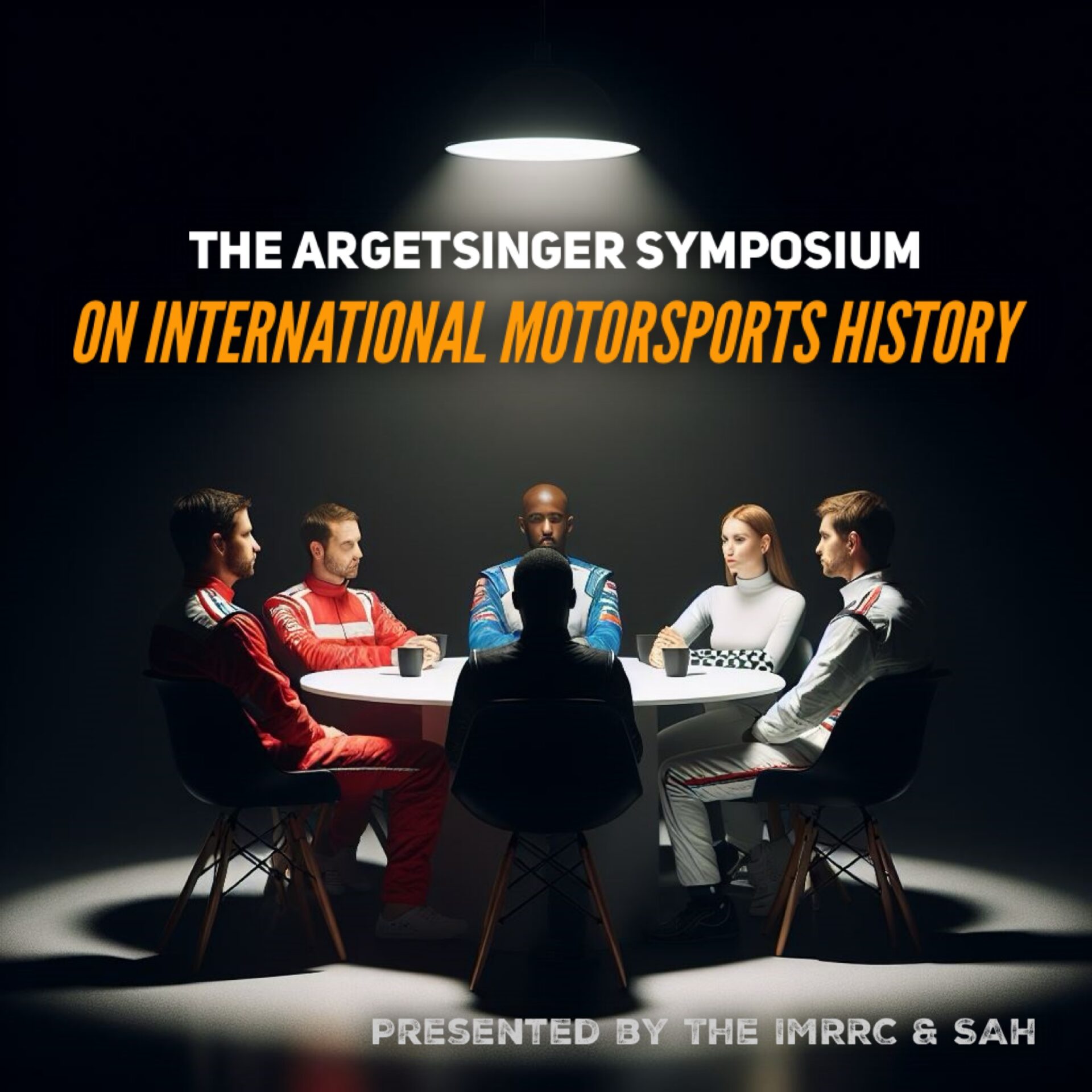 The International Motor Racing Research Center (IMRRC), partnering with the Society of Automotive Historians (SAH), presents the annual Michael R. Argetsinger Symposium on International Motor Racing History. The Symposium established itself as a unique and respected scholarly forum and has gained a growing audience of students and enthusiasts. It provides an opportunity for scholars, researchers and writers to present their work related to the history of automotive competition and the cultural impact of motor racing. Papers are presented by faculty members, graduate students and independent researchers.The history of international automotive competition falls within several realms, all of which are welcomed as topics for presentations, including, but not limited to: sports history, cultural studies, public history, political history, the history of technology, sports geography and gender studies, as well as archival studies.
The International Motor Racing Research Center (IMRRC), partnering with the Society of Automotive Historians (SAH), presents the annual Michael R. Argetsinger Symposium on International Motor Racing History. The Symposium established itself as a unique and respected scholarly forum and has gained a growing audience of students and enthusiasts. It provides an opportunity for scholars, researchers and writers to present their work related to the history of automotive competition and the cultural impact of motor racing. Papers are presented by faculty members, graduate students and independent researchers.The history of international automotive competition falls within several realms, all of which are welcomed as topics for presentations, including, but not limited to: sports history, cultural studies, public history, political history, the history of technology, sports geography and gender studies, as well as archival studies.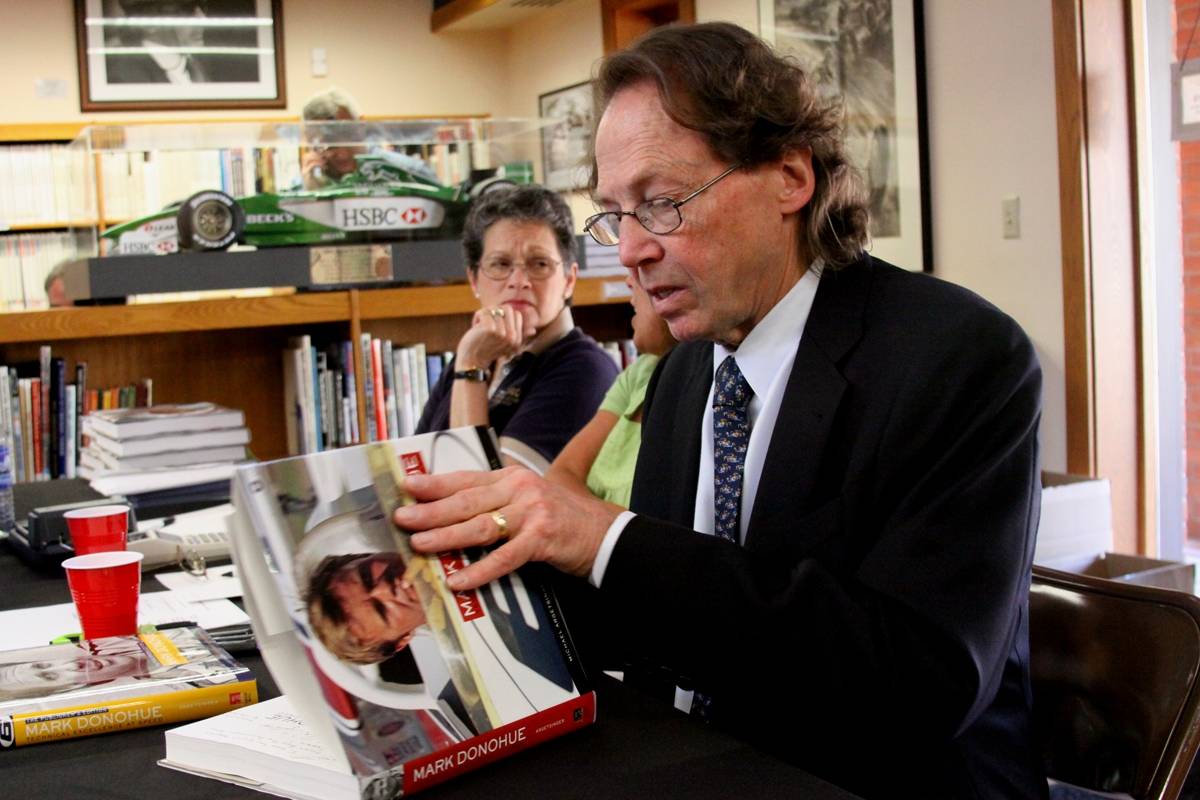 The symposium is named in honor of Michael R. Argetsinger (1944-2015), an award-winning motorsports author and longtime member of the Center's Governing Council. Michael's work on motorsports includes:
The symposium is named in honor of Michael R. Argetsinger (1944-2015), an award-winning motorsports author and longtime member of the Center's Governing Council. Michael's work on motorsports includes:- Walt Hansgen: His Life and the History of Post-war American Road Racing (2006)
- Mark Donohue: Technical Excellence at Speed (2009)
- Formula One at Watkins Glen: 20 Years of the United States Grand Prix, 1961-1980 (2011)
- An American Racer: Bobby Marshman and the Indianapolis 500 (2019)



